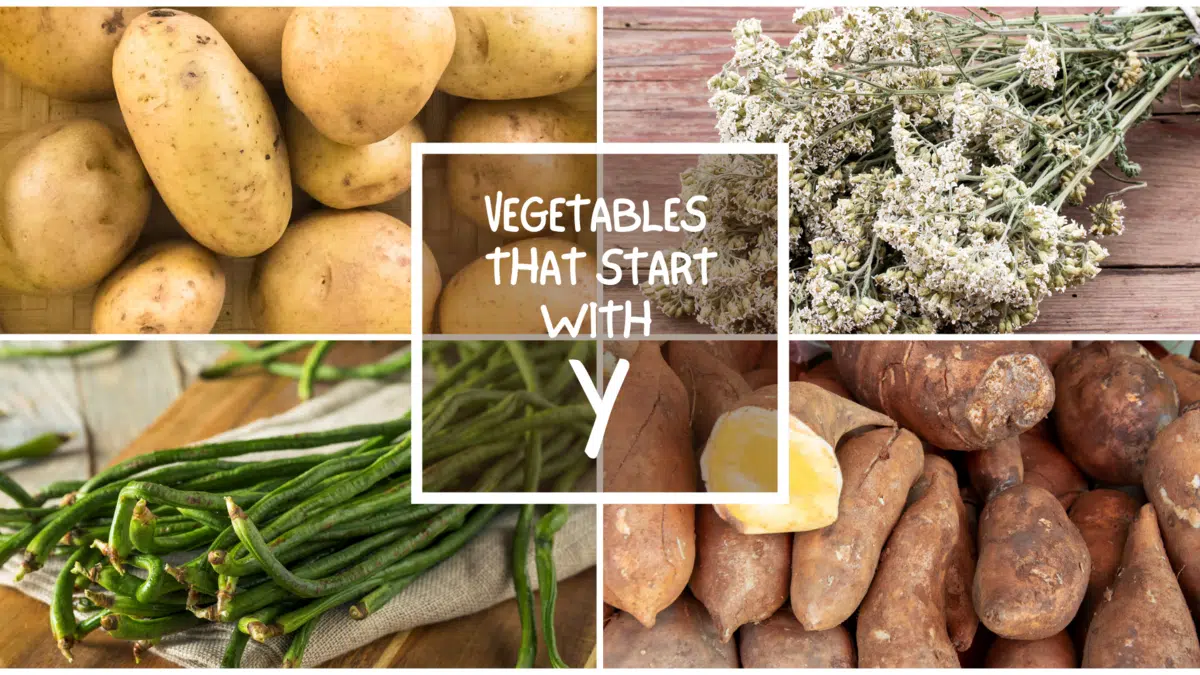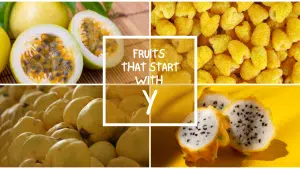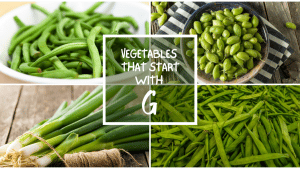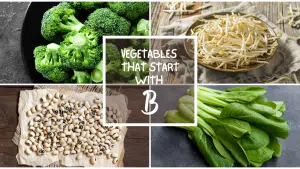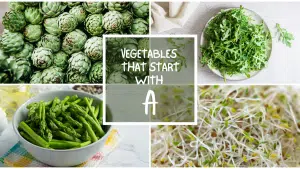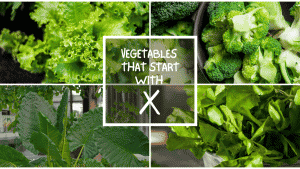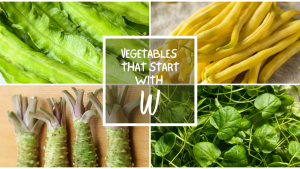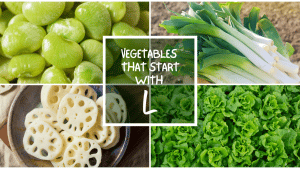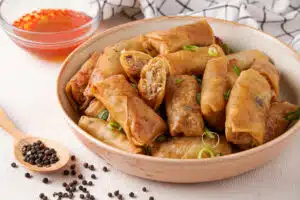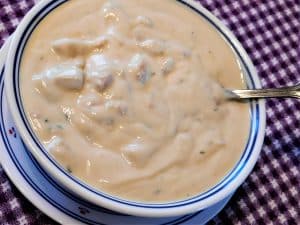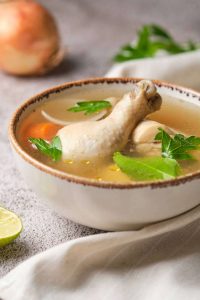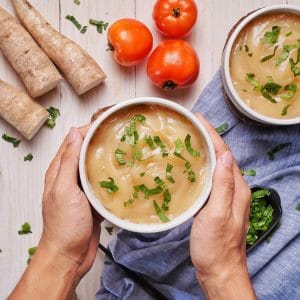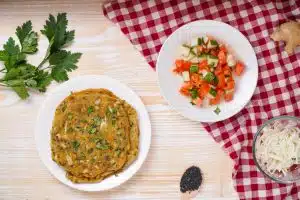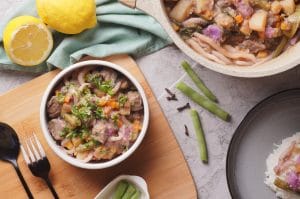All The Vegetables That Start With Y
Important Note: When you buy through our links, we may earn a commission. As an Amazon Associate we earn from qualifying purchases. Content, pricing, offers and availability are subject to change at any time - more info.
If you are looking for vegetables that start with the letter Y for your general knowledge, to improve your diet, or maybe you are playing a food-themed game, among many other reasons, then this list will help you with that. A wide range of vegetables start with the letter Y and have high nutritional value to the body. These vegetables are also used to prepare different kinds of delicious and essential recipes for the body. If you are a food enthusiast and are looking for more ingredients to prepare some of the best and most nutritious dishes and cuisines, this is a suitable list. Doctors and the department of Agriculture in the United States of America recommend eating vegetables and fruits daily to maintain a healthy lifestyle. That is why it is important to know about the different types and lists of available vegetables and make good use of them. Many vegetables start with the letter Y, such as Yukon gold potato, Yokohama Velvet, Yiessas, Yam, Yangmei, Yuzu, and Yao Choy, among others that will be discussed here. Some are popular and well known, such as the Yam, while others are rare, and you may just be hearing about them for the first time, which is still okay.
- Yam
- Yangmei
- Yao Choy
- Yardlong Bean
- Yacon
- Yarrow
- Yuca Root
- Yokohama Velvet Beans
- Yukon Gold Potato
- Yiessas
- The Final Letter
Yam
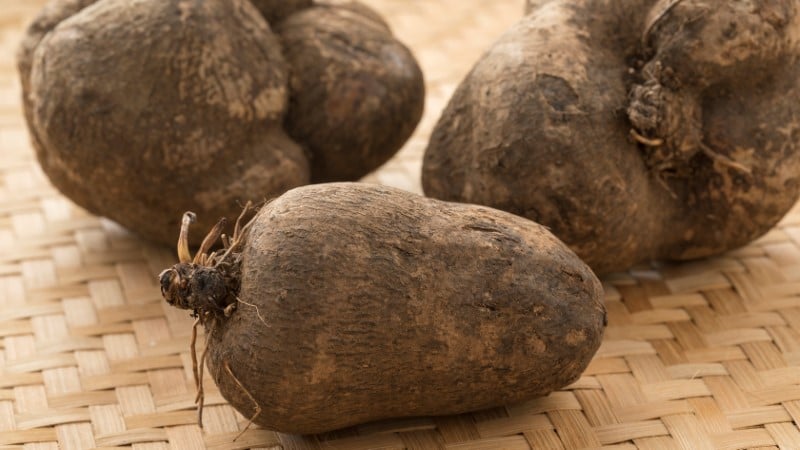
The scientific name of Yam is Dioscorea hispida. Yam is a common name for a plant species in the Dioscoreaceae family that forms edible tubers. They are perennial herbaceous vines cultivated in many temperate and tropical regions, especially in South America, Oceania, the Caribbean, Asia, and West Africa. They are grown for the consumption of their starchy tubers. These tubers come in various forms because of many cultivars and other related species. They were domesticated independently in three different continents: Dioscorea trifida in America, Dioscorea alata in Asia, and Dioscorea rotundata in Africa. Yams are monocots related to grasses and lilies. They are native to Asia, America, and Africa. Some yams grow as noxious weeds outside cultivated areas, especially in Africa. Yam plants grow up to fifteen meters above the ground while the tubers grow up to 1.5 meters deep into the soil. Yams have rough skin that is not easy to peel. It is softened by heating, making it easy to peel. The skin of the Yam varies in color from light pink to dark brown. The flesh of this tuber is usually softer and is white or yellow in younger yams, and it turns to pink or purple in mature yams.
Yams are harvested using spades, daggers, or even hands. It requires lots of labor and physical involvement. Wood-based tools are preferred to metallic ones to avoid damaging the yams because storing is an issue when damaged and spoiled easily. Yams can be stored under low temperatures of 14 to 16 degrees because lower than this causes damage through chilling. Yams can be consumed in various ways, such as whole vegetable pieces or flour. They must be cooked through roasting, frying, or boiling because they contain natural substances that can cause illnesses when eaten while raw. The Yam is used in different countries to prepare special dishes for people across the planet; for example, it is used in the Philippines to make a sweetened dessert called ube halaya and is used as a staple food in Nigeria. Raw Yam has moderate nutrient content for the human body. It contains Manganese, dietary fiber, potassium, thiamin, Vitamin B6, and C. Yam contributes calories to its consumers in West Africa, where it is highly consumed. They also use it as a source of income where its planted as a cash crop.
Yangmei

The scientific name of Yangmei is Myrica Rubra, and it is a species of the Myricaceae family. It is also called yamamomo, Japanese bayberry, red bayberry, yumberry, Chinese strawberry, waxberry, and Chinese bayberry. It grows from an evergreen tree that grows to 10-20 meters above the ground. Yangmei has a thick-skinned skin of crimson red but varies from white to purple when mature. The flesh is usually lighter, with a single seed in the middle, which is about half the size of the whole fruit. The pulp is sweet and very sour. It tastes like strawberry and raspberry combined with floral essence, only that it’s sourer with an herbal taste. It originated from Asia, mainly in South-Central China, Japan, the Philippines, and Korea. It was first introduced in the United States of America by Frank Nicholas Meyer in 1918. They can be consumed when fresh, fermented into alcoholic drinks like beer, wine, or cocktails, and canned, dried, or soaked in baijiu, a type of Chinese liquor. There are two types of yangmei in China: the sour type used for making dried fruit and the sweet type used for eating when fresh or making juice. Yangmei can also be used as a yogurt flavoring or blended into jam and preserves. Yangmei has several health-giving properties with micronutrients like flavonols and anthocyanins, which have anti-oxidative and anti-inflammatory properties.
Yao Choy
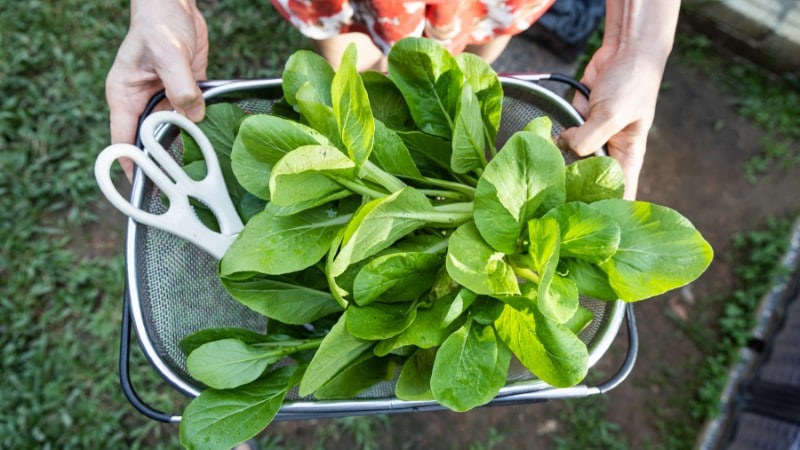
The scientific name of Yao Choy is Brassica Chinensis var. parachinensis, and it belongs to the Brassicaceae family. It is also called Chinese flowering cabbage, choy sum, yu choy cai Xin or Choi sam, among other names. Yao Choy is a leafy vegetable popularly used to prepare Chinese cuisines. It is native to China before the fifteenth century. They are usually very sweet when they are picked while young and tender. Yao Choy should be washed at least three times thoroughly to get rid of sand and dirt before cooking. It is a good source of vitamin B6, beta-carotene, and folate in the body. Beta-carotene is an antioxidant that can be converted into Vitamin A in the body. Yao Choy also provides the body with iron, fiber, and calcium. It is usually available and in season during the spring period. It has yellow flowers and should be picked before the flowers blossom. It is cooked just like broccoli and can also be added to soups, salads, and stir-fries or eaten raw or while steamed. It can also be prepared with chili beef and cashew nuts.
Yardlong Bean
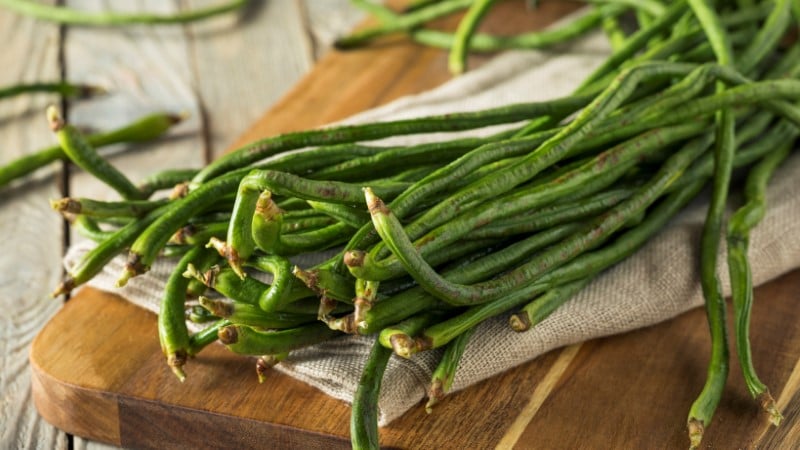
The scientific name of the yardlong bean is Vigna unguiculata. It is also referred to as a black-eye bean, China Borboti, pea bean, long-podded cowpea, Chinese long bean, Asparagus bean, bora, body, or Borboti. It is a legume grown for its edible green pods, like the green bean. It is a vigorous annual climbing vine. It is a tropical and subtropical plant that grows vastly in the warmer parts of Southern China, Southeast Asia, and South Asia. They are used as a vegetable when picked before full maturity, but they can be used as dry beans when they have been overlooked to grow maturely. The tender pods can be consumed when fresh or after cooking. They are at their best when they are still young and slender. They are sliced into small pieces for cooking purposes. They are stir-fried with shrimp and potatoes to make a famous West Indian dish. They are also used to make various sour dishes using lime and mustard sauce in the same region. They are also used in stir-fries in Thai, Kerala, and Chinese cuisine. They are used in different dishes and cuisines in different states and countries. Yardlong beans have various nutrients that are important for the body, including iron, Vitamin A and C, phosphorous, folate, Manganese, magnesium, riboflavin, thiamin, potassium, and proteins.
Yacon

The scientific name of Yacon is Smallanthus sonchifolius which belongs to the Asteraceae family. It is a perennial daisy whose origin is northern and central Andes from Colombia to northern Argentina. It has crunchy, sweet-tasting, tuberous roots. Yacon is also referred to as Peruvian ground apple and is composed of mostly water and fructooligosaccharide. The taste and flavor of Yacon are similar to that of Jicama only difference is that Yacon is slightly sweeter, resinous, and floral in its taste. Yacon is widely grown in climates with light freezes like in Nepal, New Zealand, and Southern Australia. It is native to Japan, from where it spread to other Asian countries like China, the Philippines, South Korea, and many other countries. It is also available in farmer’s markets and food stores in the United States of America. Yacon can be eaten when raw, roasted, dehydrated, boiled or processed into jams, vinegar, flour, chips, syrup, beverages, and juice. When fresh, they are crunchy and sweet. They taste sweeter upon full maturity when they have been exposed to frost. They are usually very sweet when left in the sun to harden after harvest. Yacon has antidiabetic and hypoglycaemic effects on the body. It is used against digestion problems and kidney and liver diseases.
Yarrow

The scientific name of Yarrow is Achillea millefolium, a flowering plant that belongs to the Asteraceae family. It is also referred to as common yarrow, and its origin is the temperate regions of the Northern Hemisphere in Europe, Asia, and North America. The entire Yarrow plant is edible, with its flowers and leaves being very popular for use in recipes. Fresh flowers and leaves are used in salads, stews, and soups, while they can also be dried and used as spices. They complement fruits and vegetables quite well. Yarrow has a strong scent and sweet flavor similar to that of tarragon. It is a soft herb hence should not be overcooked and is best when added towards the end of the coking. Yarrow is a rich source of nutrients containing Vitamin A and C, potassium, iron, zinc, magnesium, niacin, antioxidants, and phosphorus. It is used in balms to treat skin problems, fight infections, reduce swelling and bruising, and stop bleeding. It is also useful in relieving stress and anxiety, helping with digestive problems, and maintaining regular menstrual cycles.
Yuca Root

The scientific name of Yucca root is Manihot esculenta. It is a woody shrub belonging to the spurge family, Euphorbiaceae, and it originated from South America. It is also referred to as manioc or cassava root. It is grown for its edible starchy tuberous root, which makes it a high source of carbohydrates in the body. They are similar in shape and size to sweet potatoes, with a rough, bark-like crust that is difficult to peel. It is a common staple food in most developing world countries where most people depend on it. In the United States of America, it is used to make starch referred to as “tapioca.” The Yuca root has white or cream-colored pulp with a grainy texture resembling a potato. The flesh has a slightly sweet and somewhat nutty taste. It is high in carbohydrates and low in saturated fat, sodium, and cholesterol. It also contains Vitamin C and Manganese, which are important for the body. They can be used to prepare oven-baked yuca chunks and fries. It can also be used to make waffles or boiled with garlic and onion.
Yokohama Velvet Beans
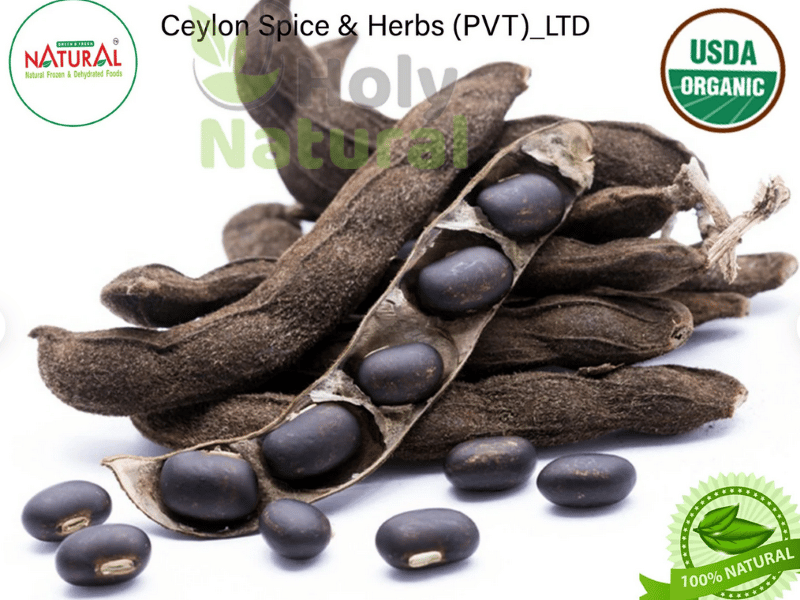
The scientific name of Yokohama velvet beans is Mucuna pruriens, a tropical legume whose origin is tropical Asia and Africa, where it is vastly naturalized and cultivated. It belongs to the Fabaceae family. It is also commonly referred to as Florida velvet bean, Lyon bean, cowage, monkey tamarind, Bengal velvet bean, Mauritius velvet bean, Velvet bean, cowitch, and lacuna bean. Upon skin contact with this plant, itchiness and swollen bumps are caused, which requires extra care when dealing with them. The itchiness is caused by a protein substance called mucunain. It is an annual climbing shrub with long vines which are 15 meters long. When young, it has a lot of fuzzy hairs covering it, which disappear as it gets older. The seeds are shiny black or brown drift seeds. The beans are edible, and they can also be fermented to form a food similar to tempe, commonly referred to as Bengkuk Tempe or Tempe Bangkok. It is used as a coffee substitute in Central America. They have deep purple bean pods. Yokohama velvet beans are rich in antioxidants, minerals, phytonutrients, and essential elements that help maintain a healthy and well-functioning body. They also have phytochemicals that make the immune system strong, protect cells from DNA damage, slow down cancer cells’ growth, and regulate hormones.
Yukon Gold Potato
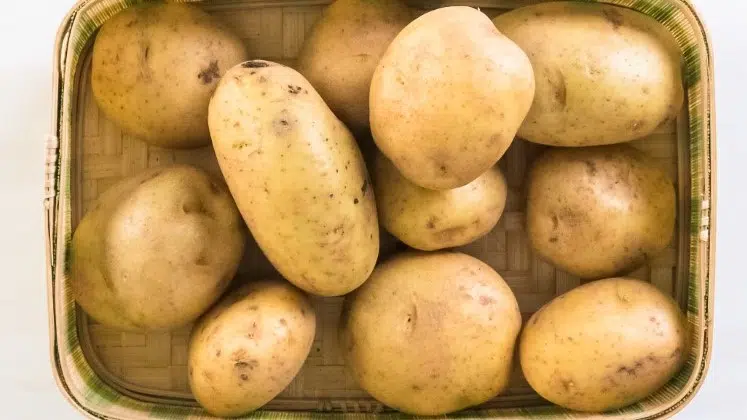
The scientific name of the Yukon Gold Potato is Solanum tuberosum. It is native to Ontario in Canada. It belongs to the potato family and is different in that it has a thin, smooth, brown-spotted skin and a waxy, moist, sweet, and yellow-tinged pulp. They can be prepared by boiling, grilling, frying, baking, and roasting. They have nutrients such as proteins, calcium, Vitamin C, iron, dietary fiber, potassium, and sodium, which help maintain a healthy immune system. It can be cooked in soups and stews because of its ability to hold its shape and can also be mashed. They are available and can be harvested all year round. These potatoes are medium or large, and they have a round to oblong shape, which is slightly flattened. Yukon Gold potatoes assume a creamy and tender texture with a rich, buttery, and earthy taste when cooed. They are highly popular in North America, and they can be used in both wet and dry-heat cooking methods. They can be used in various culinary applications. They are popular for preparing French fries. They can survive for up to two weeks when stored in a cool, dry, and dark place. It is served at high-profile events in the United States as a favorite potato because of its versatile nature. The Yukon Gold potato grows throughout Canada, the Western regions of the United States, and the Midwest. It can also be found in grocery stores and food markets all over.
Yiessas
Yiessas originated from Central and Northern America and Greek, where they have been commonly used as a traditional food for many centuries. Yiessas have low-calorie levels, which make them good for a healthy body, and they have low sugar levels, making them appropriate for people with diabetes. They are not as tasty when eaten alone, so it is normally added to lemon to enhance their taste. They mainly vary in size and shape, with a yellow to orange crust, which is thin. Its pulp is moist and sweet. It is best consumed when cooked just like yams or even in their place. They are harvested through picking when they mature and are allowed to sit for some time until they ripen.
The Final Letter
There is always a variety of vegetables in season, whether the dark green leafy ones, tubers, or grains in pods. They are all very important to the body, and it is advised that they should be consumed regularly. This list of vegetables discussed above contains essential nutrients and vitamins that contribute to a healthy lifestyle. Most of these nutrients fight and control diseases, especially chronic ones, so it is good to incorporate these vegetables into your daily diet.
